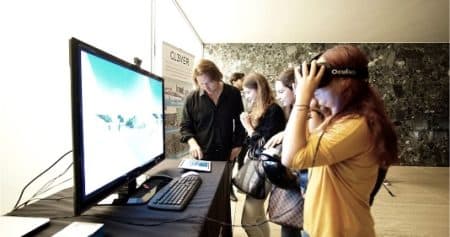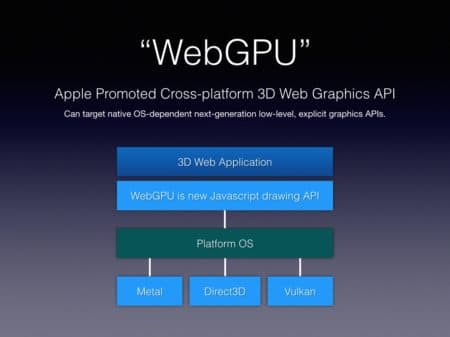This year Architosh will be at SIGGRAPH 2017 and like previous years in the past, the boots on the ground will be filled by veteran 3D professional, author, and technologist, Akiko Ashley, who is an associate editor at Architosh. To say that Akiko’s schedule for interviews is full is a massive understatement.
Why The Giant Build-Up This Year?
Yes, why the bigger numbers this year at SIGGRAPH, which takes place next week in Los Angeles?
Part of the answer has to do with the VR-AR boom. We recently ran an article on an industry report that counted the number of actual companies in both spaces (see, Architosh, “New Report—How VR and AR Will Impact Business in 8 Ways,” 15 July 2017) and the actual numbers were a bit surprising. We are talking well over 500 separate startup companies in both spaces. The report also makes note that there are over 200,000 registered developers aiming to build games for the Oculus Rift.

01 – The VR and AR industries are set to explode with over 1000 startups in these two spaces. Not surprisingly, the VR and AR industry is settling into the LA area where they are close to Hollywood and related movie and gaming studios. But this technology has huge pro market implications, as can be seen above.
We have not counted exhibitors yet but we naturally expect to see an explosion of VR or AR-related companies both old and new but particularly new over the next few years.
You add the VR-AR boom to a healthy, if not booming, economy and this points to a very good SIGGRAPH show.
Preview Talk—Core Technologies Behind The Web, VR, and AR
One of the biggest things Architosh wants to keep track of for readers is the shaping of the core technologies powering much of the cutting edge and the new. We have entered a stage where the consistent core technologies powering graphics is significantly waning. For years and years, both the gaming world and the professional 3D graphics industries have relied on the stability of OpenGL and OpenGL ES.
But that technology is changing.
Both Microsoft and Apple have already decidedly gone their unique ways with low-level GPU APIs. And then there is Apple’s lack of participation with The Khronos Group’s Vulkan, akin to Apple not embracing OpenGL. If it wasn’t for the emergence of serious graphics on the web these developments might be a bit concerning for Apple’s Mac users in particular, but this isn’t the case at all. (reference point? see: Architosh, “solidThinking Brings Generative Design to the Cloud,” 25 July 2017).
Today WebGL, now at version 2.0, is taking an increasingly important place in “core technology stack” talk. WebGL is, in essence, taking a native API and creating Javascript bindings by a Javascript middleware. Neil Trevett, President of the open industry consortium, Khronos Group, has told Architosh that a ton of testing effort goes into making sure WebGL works across browsers and platforms and that “WebGL is truly portable.”
Portable Devices and Game Engines
With Apple stopping support of OpenGL ES at version 3, even at the mobile device level, the unification across a plethora of mobile devices called OpenGL ES is largely gone. Trevett told Architosh back in March of this year that, “there is a lot of functionality that came into WebGL 2…because OpenGL ES 3 was the first version that came into the status of a true desktop API for graphics.” In other words, OpenGL 3 was quite powerful but with Apple pushing Metal for everything (and they started with iOS) again without a universal API, things were looking to get rougher for developers.
Apple recognizes that they should promote universal standards and recently proposed WebGPU as an API standard that would tap into OpenGL but with a unifying layer that can tap into native low-level APIs that are unique to various platforms, including their own (ie: Metal). (see: Architosh, “Apple’s WebGPU Standard Proposal—Aiming at Common Access to Explicit Graphics,” 24 February 2017) But this standard may not take off and competes on several levels with what The Khronos Group is already trying to do.

02 – Apple’s proposed and temporary named WebGPU API standard would not tap into OpenGL but instead create a universal layer that can tap the power of varying underlying low-level, explicit APIs like Vulkan or Direct3D or Apple’s own Metal.
In the meantime, this is where the game engines are helping the cause of developers. Game engines are taking care of the portability issues, which have naturally become more difficult with every major player pushing their own low-level graphics API.
To understand just how important the game engines are becoming one must simply look at the new upcoming Twinmotion 2018. This professional 3D interactive rendering and animation application works on the Mac for the first time due to the switch-out and switch-in of the Unreal game engine.
We look forward to hearing from The Khronos Group at this year’s SIGGRAPH 2017. We expect this industry consortium to continue the good fight of helping developers reach as many platforms as possible from common code bases, ease development of graphics intense games and professional applications alike, as well as do for the VR, AR and MR industries what they have done largely for the desktop and mobile devices 3D industries for decades.
Architosh Insights
Well there are going to be dozens and dozens of interesting software app announcements at SIGGRAPH 2017, Architosh will be looking to learn as much as it can about two specific areas: (1) we want to naturally discover and track the leaders in the emerging VR, AR and MR markets and (2) we want to understand the core graphics technologies affecting development decision-making and particularly deployment. For example, what is the status of OpenGL going forward? What are third-parties doing with Vulkan and Metal? Is “compute” coming to WebGL and when exactly?
The Key Takeaways
- VR and AR technology companies are taking root or opening up shop in the Los Angeles area rather than in other tech areas like Silicon Valley, San Francisco, Boston or elsewhere partly because of the proximity to Hollywood and the big studios.
- The status of WebGL and its attendant Web-related technologies is an important watch for Architosh as the graphics API is becoming a unified and highly portable technology stack. We will continuously see more and more 3D desktop and mobile applications delivered through web browsers and mobile app interfaces that are essentially custom browsers.
- Game engines are handling the portability challenges for software developers helping them reach more platforms than they could ever do if they hand-coded for them directly. With the proliferation of platform-specific, native low-level graphics API options, game engines offer much to developers.



Reader Comments
Comments for this story are closed